Every year we have an abundance of Swiss chard in our garden and freezing it is a great way to preserve it to use all year round.
Posts may contain affiliate links. If you purchase an item from these links, a small percentage goes to support the work of this blog. As an Amazon Associate I earn from qualifying purchases.
What is Swiss Chard?
Swiss chard is a green leafy vegetable. It is in the same family as spinach and beets. Swiss chard grows upright on stalks and both the stalks and leaves are edible.
Swiss chard is a pretty popular vegetable for backyard gardeners to grow. It's relatively easy to grow and does well in both summer weather and cooler weather.
You will find chard with white stalks, yellow stalks, pink stalks and red stalks. Chard with often be sold as rainbow or "bright lights" chard when the plants have various colored stalks. Red chard will have red stalks (and the leaves also may have a red or very dark pink color to them).
How to Freeze Swiss Chard
Freezing Swiss chard is a great way to continue to be able to use your summer garden vegetable throughout the year. Since Swiss chard tends to be relatively prolific, freezing allows you to not waste it when you are getting close to the first frost.
The first thing is to pick your Swiss chard. I like to use a pair of kitchen shears and clip the stem leaving about an inch at the bottom. Harvest as much as you plan to freeze, remembering that it cooks down quite a bit.
Next you need to wash your chard. I like to place it in a large bowl of cold water to soak a bit (about 20 minutes) as chard tends to be pretty dirty and sandy. Then I rinse them and set aside. Or you can rinse them well under cold, running water.
Remove the leaves from the stems. The stems can be saved to be chopped and added to recipes, or discarded. Or, use them to make these Spicy Pickled Swiss Chard Stems. See below for more Swiss chard recipe ideas.
Fill a large pot about 3/4 of the way with water. Heat over medium heat until boiling. While the water comes to a boil, prepare an ice water bath. Fill a large bowl about halfway with cold water and then add about a tray full of ice.
When the water is boiling, add the Swiss chard leaves, working in batches if needed. Stir and blanch for 60 seconds.
Blanching before freezing helps to stop the enzyme action in the vegetables and keep them greener and fresher longer.
Then use a spider utensil to remove the leaves from the pot and place them in the ice water bath. Let them cool and use the spider again to remove them from the ice water and place on a kitchen towel to dry. Pat the leaves with the towel to dry them further.
Repeat this process until you have blanched all the Swiss chard you are preparing to freeze. You can leave the leaves as they are, or tear them up a bit to have smaller pieces ready to add to dishes.
Tip: Save your water from the ice bath and blanching (let it cool first) to water your outside garden or potted plants.
At this point the leaves are ready to be frozen. You can proceed by filling a freezer bag with the leaves, removing as much air as possible, labeling and then freezing. Or, you can use a muffin tin to freeze them into smaller portions.
To do this (it works best with leaves that have been torn into smaller pieces as then these portions will be ready to simply add to soups, sauces, etc. as needed), you place the prepared leaves into the cups of a muffin tin. Pack the leaves in well to fill.
Place the muffin tin in the freezer for about two hours. Then use a butter knife to carefully remove the Swiss chard from each individual cup. Place these into a freezer bag, removing as much air as possible, label, and freeze.
When choosing your freezer bag, pick a quart size of you have a small amount of Swiss chard. You want as little head space to keep the leaves as fresh as possible. Use a gallon bag if you are doing a lot of chard leaves.
When you are ready to use the chard, you simply need to grab out one of these individual muffin tin cups of chard. If you use a bag without individual servings, then you can use the whole bag for your recipe, or try to break some off.
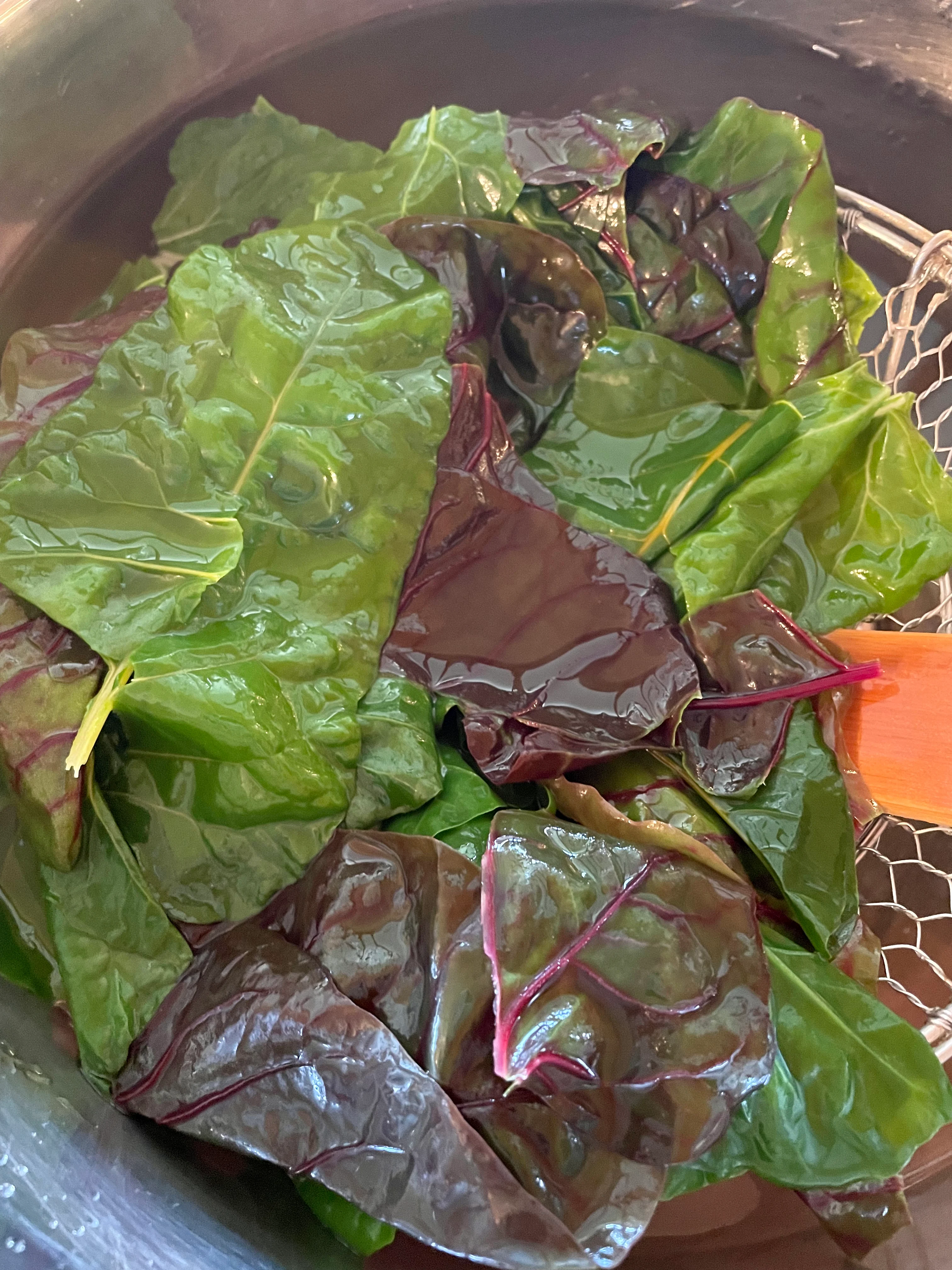
How to Freeze Swiss Chard
Ingredients
- Swiss chard
- water
- ice
Instructions
- Wash your Swiss chard well to remove all the dirt. Pull the leaves off the stems. You can either tear the leaves into smaller pieces, or leave them in large pieces.
- Fill a large pot about 3/4 of the way with water and bring to a boil. Fill a large bowl about half way with cold water and some ice (about a tray's worth).
- When the pot of water is boiling, place the Swiss chard leaves into the pot and stir. Do this in batches if you cannot fit them all in at once. Boil for about 60 seconds.
- Use a spider to remove the leaves from the boiling water and transfer them to the ice water bath bowl. Stir them around and then use the spider to remove the leaves to a kitchen towel to dry a bit (shake off as much excess water as possible).
- Pat the leaves with the towel. At this point you can place the leaves into a freezer bag, or into a muffin tin to make portions frozen separately.
- If using a freezer bag, use one that leaves the least amount of head space for the amount of Swiss chard you are freezing. Remove as much air as possible, label, and freeze.
- If using a muffin tin, pack leaves into the cups of the muffin tin. Push them down to pack in quite a few. When you've used all the leaves you've prepared, freeze the muffin tin for about 2 hours.
- Use a butter knife to remove the leaves from each of the tin's cups. Place them into a freezer bag (again, choosing a bag size that leaves the least amount of head space). Remove as much air as possible, label, and freeze.
- When you are cooking, you can add the Swiss chard right into a pot of soup, pasta sauce, etc. and cook until softened.
How to Eat and Enjoy Swiss Chard
Swiss chard leaves and stems are both edible. Some people like to use them together, and some people like to use them separately. The stems are crunchy and have a stronger, more bitter taste than the leaves.
Large leaves are generally cooked. The small, baby Swiss chard leaves can be picked and eaten raw in salads. Stems are generally cooked as well. Steamed Swiss chard and Sauteed Swiss chard are two common ways people enjoy this vegetable.
Swiss
chard pairs well with mushrooms, eggs, potatoes, cheese, and pasta. I
like to add some to vegetable soup or use it in this Sausage, Potato, and Swiss Chard Soup
recipe. I add Swiss chard into tomato based pasta sauces or into an
Alfredo sauce. Swiss chard leaves work well in cheese stuffed shells.
If you need some more ideas for using up your Swiss chard, check out these recipes. These recipes mainly use fresh Swiss chard, but you can use the frozen in soups, sauteed, pastas, and more.
Swiss Chard Stems with a Cheesy Creamy Breadcrumb Topping
Swiss Chard and Mushroom Stuffed Puff Pastries
Potato Gnocchi w/ Italian Sausage, Chard, & Mushrooms
Roasted Squash Pasta w/ Pancetta & Swiss Chard
Orecchiette w/ Swiss Chard, Parmesan, & Lemon
I
hope this inspires you to use more Swiss chard in your cooking. Also,
if you grow Swiss chard in your garden, I hope this helps you to
preserve it for use all year round.
Don't forget to follow me on Instagram, Facebook, and Pinterest!
Check out these other posts for preserving garden produce:


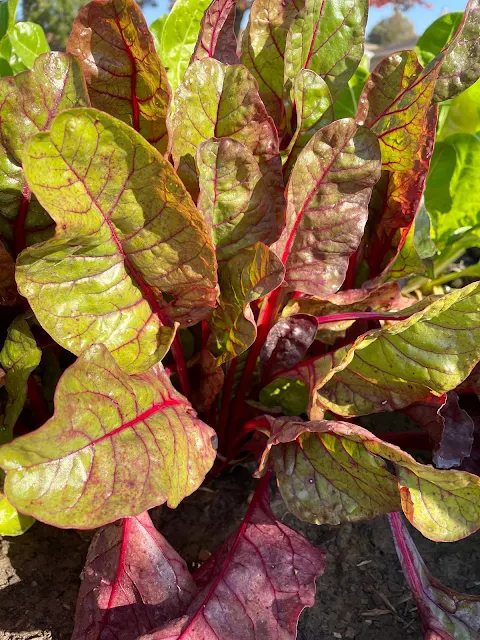

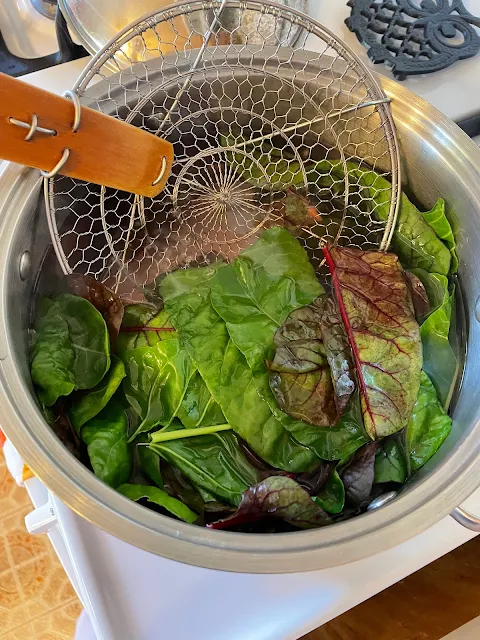
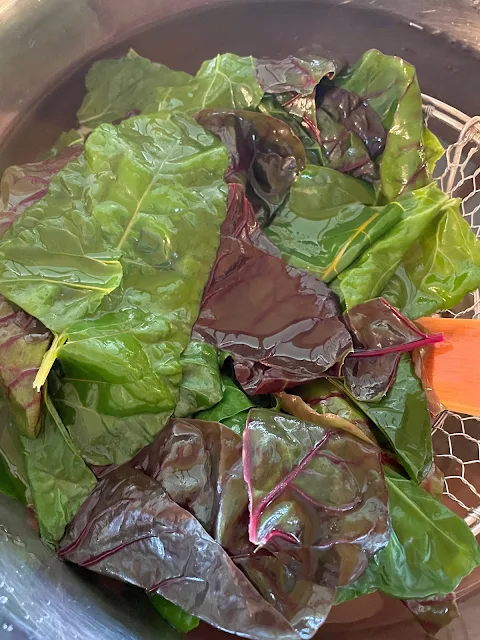
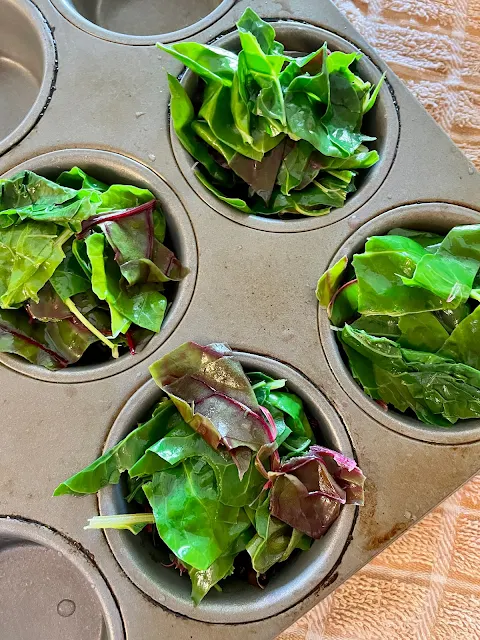
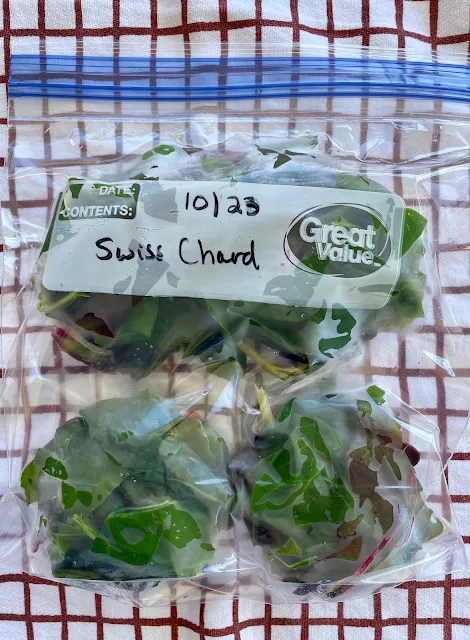
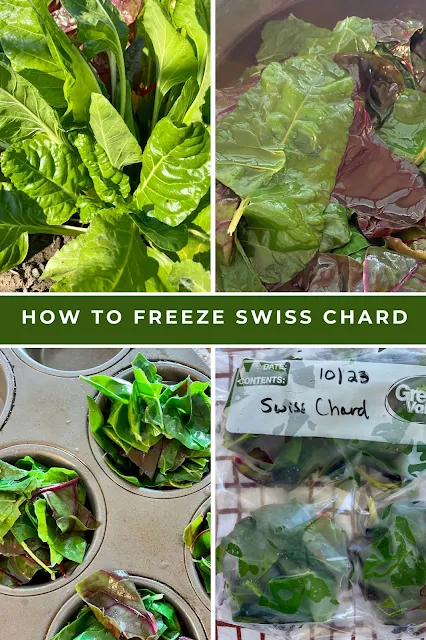
No comments:
Post a Comment
I love to hear from you!